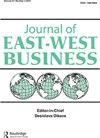银行使用综合绩效衡量系统真的是“综合”的吗?一种结构方程建模方法
IF 0.9
Q4 BUSINESS
引用次数: 5
摘要
摘要本文研究了综合绩效衡量(IPM)体系的实施,平衡计分卡作为IPM框架提出的四个绩效衡量指标(即财务、客户、内部业务流程和学习与成长视角)之间的整合程度,以及非财务披露对财务绩效的影响。本研究采用事后研究设计。采用自行设计的包含48个项目的披露清单,从财务(18)、客户(18)、内部业务(4)和学习与成长(8)的角度分析了2012-2014年3年期间的绩效披露。采用结构方程模型探讨绩效指标之间的相互作用,以及实施ipm后非财务披露对财务绩效的影响。该研究的结论是,银行没有采用一种综合的方法来衡量业绩和披露业绩,因为业绩似乎是以一种随意的方式传达的。未能采用综合方法进行业绩披露似乎是造成非财务披露对财务业绩影响较低的原因。本研究报告的独创性在于认识到它制定了一份披露清单,其他研究可以利用这份清单来评价年度报告中业绩披露的质量。据这组科学家所知,这项研究是在尼日利亚的背景下,第一次利用二手数据评估IPM系统中绩效指标之间的整合水平。对财务指标的过度关注意味着企业没有利用综合绩效衡量和披露方法的协同效益。本文章由计算机程序翻译,如有差异,请以英文原文为准。
Is the Use of Integrated Performance Measurement System by Banks Really “Integrated”? A Structural Equation Modeling Approach
Abstract This paper investigates the implementation of integrated performance measurement (IPM) system, the extent of integration among four performance measures proposed by the balanced scorecard as an IPM framework (namely financial, customer, internal business process, and learning and growth perspectives) and the impact of non-financial disclosure on financial performance. The study employed ex post facto research design. A self-designed disclosure checklist containing forty-eight (48) items across financial (18), customer (18), internal business (4), and learning and growth (8) perspectives was used to analyze performance disclosure for a 3-year period of 2012–2014. Structural equation modeling was used to explore the interaction among the performance measures, as well as the impact of non-financial disclosure on financial performance post-IPM implementation. The study concludes that banks do not adopt an integrative approach to performance measurement and disclosure, as performance appears to be communicated in a haphazard manner. Failure to embrace an integrative approach to performance disclosure appears to be responsible for the low impact of non-financial disclosure on financial performance. The originality of the current study stems from the awareness that it developed a disclosure checklist that can be used by other studies to assess the quality of performance disclosure in annual reports. To the researchers’ knowledge, the study is the first, in the Nigerian context, to assess the level of integration among performance measures in an IPM system using secondary data. The excessive focus on the financial measures implies that firms are not leveraging on the synergistic benefits of an integrative approach to performance measurement and disclosure.
求助全文
通过发布文献求助,成功后即可免费获取论文全文。
去求助
来源期刊

Journal of East-West Business
BUSINESS-
CiteScore
2.10
自引率
26.70%
发文量
19
期刊介绍:
Journal of East-West Business is a quarterly journal that deals with contemporary and emerging aspects of business studies, strategies, development, and practice as they relate to the Russian Federation, the new republics of the Commonwealth of Independent States, and Eastern/Central Europe-and business relationships with other countries of the world. The Journal of East-West Business is international in scope and treats business issues from comparative, cross-cultural, and cross-national perspectives. The journal features an Editorial Advisory Board that represents the Russian Federation, Eastern/Central European, and Baltic states in this new business arena.
 求助内容:
求助内容: 应助结果提醒方式:
应助结果提醒方式:


